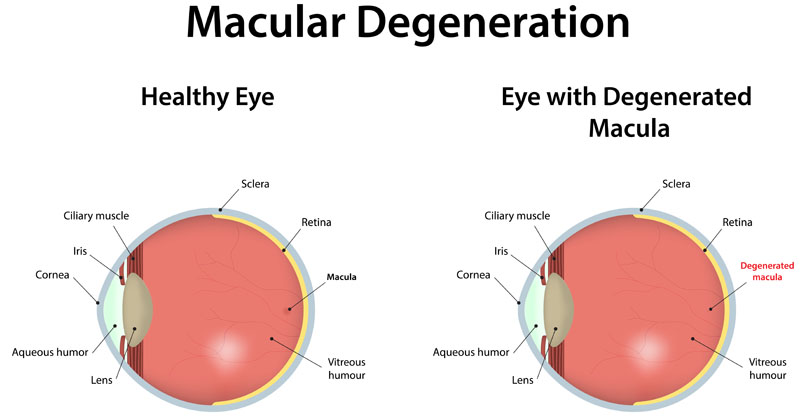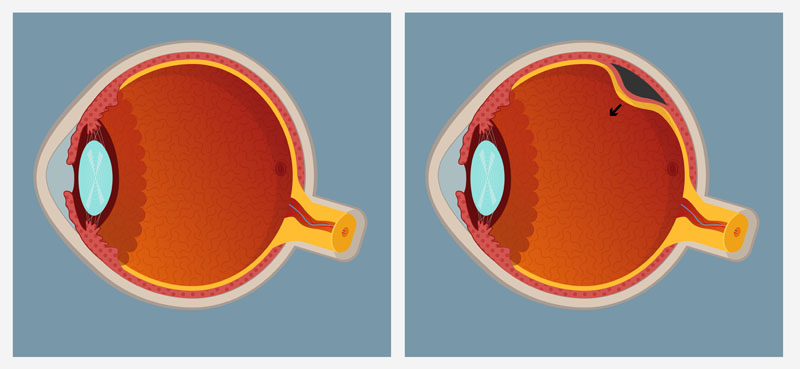retina and Vitreous disorders
The vitreous is the area anterior to the retina. It contains a gel-like substance that thins as we age. The layer of tissue lining the inside of the back of the eye is called the retina. It contains millions of photoreceptor cells which convert light into images. The macula is where light comes to a focus – it has mainly cone cells for color vision.
The vitreous is a clear gelatin-like substance between the lens of the eye and the retina. Light rays, carrying images to the brain, must pass through this clear gel on the way to the retina. The retina transmits information (carried by light rays) to the brain via the optic nerve. When disease or injury causes clouding of the vitreous or damage to the retina, the result is a partial or complete loss of vision.
Diabetic retinopathy is the most common of all retinal diseases. A direct result of diabetes is diabetic retinopathy. Retinopathy is an alteration of blood vessels that provide nourishment to the retina. These blood vessels may leak, develop irregular branches, or become enlarged causing poor vision.



Macular Degeneration
Macular degeneration, often associated with aging, is a common retinal disease. With this problem, the central area of the retina deteriorates causing poor central vision and requires prompt evaluation.


Retinal detachments can be caused by disease or injury and involve a segment of the retina actually being separated or peeling away from the back wall of the eye. This usually results in the immediate loss (partial or complete) of vision.

Retinal Detachments
Vitreous disorders are usually characterized by floaters or cloudy vision. Floaters are particles suspended in the vitreous gel, however, they do not represent a danger to your vision. The most common cause of clouding is a hemorrhage (bleeding inside the eye).
If you have AMD and are being treated with LUCENTIS®, there may be financial assistance available. The specialists at LUCENTIS® Access Solutions™ are here to help find a way for you to get the LUCENTIS® (ranibizumab injection) your doctor has prescribed, even if you have a problem paying for it.
If you have no insurance, or you are effectively uninsured because your health insurance plan denies you coverage for LUCENTIS, you can apply to the Genentech® Access to Care Foundation for help.
Vitreous disorders are usually characterized by floaters or cloudy vision. Floaters are particles suspended in the vitreous gel, however, they do not represent a danger to your vision. The most common cause of clouding is a hemorrhage (bleeding inside the eye).
If you have AMD and are being treated with LUCENTIS®, there may be financial assistance available. The specialists at LUCENTIS® Access Solutions™ are here to help find a way for you to get the LUCENTIS® (ranibizumab injection) your doctor has prescribed, even if you have a problem paying for it.
If you have no insurance, or you are effectively uninsured because your health insurance plan denies you coverage for LUCENTIS, you can apply to the Genentech® Access to Care Foundation for help.
